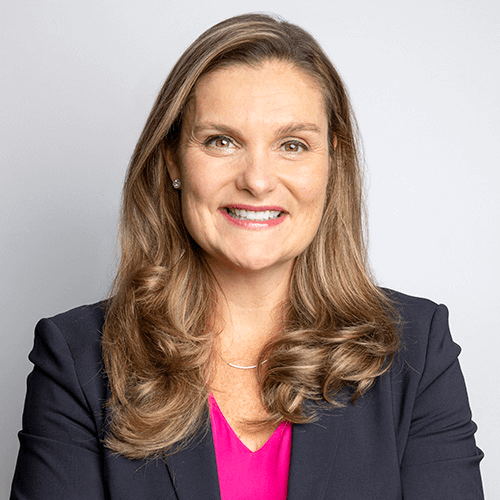A material shift has taken place for ESG – that is the key message from our Global ESG Conference. We have moved on from ESG as a nice-to-have offering to business leaders, institutional investors and government bodies recognizing the positive impact and necessity of adopting ESG strategies.
Over three comprehensive days, RBC Capital Markets (RBC CM) hosted leading voices on ESG - from prominent human rights advocate, climate diplomat and former Irish President Mary Robinson; California State Treasurer Fiona Ma; Managing Director and Global Lead of Sustainable Finance at Boston Consulting Group Vinay Shandal and US Editor-at-Large at the Financial Times Gillian Tett to business leaders like Jonathan Gray, President and COO of Blackstone and Dave McKay, President and CEO of RBC. Here are our top takeaways:
Purpose and Profit go Hand in Hand
The importance of corporate purpose was woven through many of the sessions over the three days. Incorporating ESG into business decisions is no longer just the “right thing to do”; it is a key source of value creation and in turn, builds sustainability into a competitive advantage. Jonathan Gray said that “ESG is not something to the side, we want to make better companies, better businesses and adhering to ESG enhances our ability to make companies better, more resilient and faster growing”. Blackstone believes that if it can be more intentional in embracing ESG factors, it can also be more impactful.
Companies that have an ESG strategy also appeal more strongly to existing and prospective employees. Dave McKay said that “employees want to be part of something that is bigger than them, they want to be part of an organization that makes a difference”.
Investors across asset classes and strategies are becoming more purposeful in integrating ESG factors, measuring impact and understanding their role as financial institutions. This is driven not only by corporate purpose, but by profit, as studies show that ESG funds consistently outperform the markets. There is also tremendous interest in ESG financial products, such as green and social bonds, but scrutiny of these products is rightfully high, making it important to ensure the integrity of the offering.
Leaders are Embracing ESG as an Innovation Opportunity
According to Gillian Tett ESG is showing the same traits as other new areas of financial innovation, such as fragmentation, opacity, label confusion, acronym overload; similar to what was seen in the early days of securitization. There is a strong sense that ESG needs to mature and standardize to enable like-for-like comparison between companies and investments. While this is true, Vinay Shandal made the point that regulators are working to help address this challenge, citing for example, the International Organization of Securities Commissions’ (IOSCO) recent support for a global sustainability standards board. There is now growing evidence that ESG is, like technology, a disrupting force across the entire organization. ESG needs to be embedded in the wider corporate strategy and those firms who got the digital transformation right should apply the same principles of agile change in the face of uncertainty in order to become sustainability leaders.
You Can’t Split up ESG: Social and Governance Factors Remain in the Spotlight
Climate risk needs focus and action in the next five to ten years to result in real change in the face of the enormous global challenge. However, it’s important for companies and investors to look at environment, social and governance factors holistically and to recognize that the E cannot be separated from the S and the G. Mary Robinson pointed out that the global pandemic has exacerbated inequalities and brought to light how they intersect with one another. President Robinson suggested that the COVID-19 pandemic had taught the world about the fragility of humanity, but also pointed out how historically, pandemics have triggered social change. The pandemic has triggered questions about how to create an economic model that can be green, inclusive and equitable and President Robinson urged companies and investors to “go ahead and lead and invest in the kind of future that you want to see in 10, 20 years’ time, to position yourself to be future-fit.”
Why we Need the Carrot and the Stick
While there is an appetite for change, action is critical for success. Governments matter and there is optimism that comes from US President Joe Biden’s first months in office and his strong commitment to climate action. Governments can help in standardizing and incentivizing ESG disclosures, setting clear climate targets and essentially offering both a “carrot and stick” approach to drive action on diversity and inclusion. California State Treasurer Fiona Ma talked about how many communities, companies and stakeholders were driving change, but that it is hard to change the status quo alone. In addition, there were signs at the conference that anticipation is building around COP 26, the UN Climate Change Conference which will be held in Glasgow in November. A series of climate and sustainable investment commitments from governments are expected in the lead up to this conference.
We can Build Forward Together
While there has been talk of ‘building back better’ after the pandemic, many of our speakers preferred the idea of ‘building forward’. While governments are a necessary part of the ESG disruption, companies and investors also need to take a leading role in building the world they want to see. The need for climate action has a pressing urgency, but the pandemic has pointed out that there are no crises in isolation. There is a social cost in transitioning to a low carbon economy that will require a focus on jobs and wages to ensure that workers are not left behind in the new economy. In order to ‘build forward’, ESG innovation needs to continue, with communities, companies, governments and investors all working together.
